One year since the Paris Olympics debacle for Indian badminton, the BWF World Championships brings the medal stakes right back to the La Chappelle Arena... with one major difference. In the last one year, the expectations from Indian badminton players have plunged, following the drop in form and ranking of the top stars.
Over that period, we've seen an Unnati Hooda quarterfinal in the China Open Super 1000. An Ayush Shetty title at the US Open Super 300, a Tanvi Sharma final in the same event. And... that's it. Apart from the injury-marred but ever-reliable pair of Satwiksairaj Rankireddy and Chirag Shetty (3 BWF tour semifinals this season), and those glimpses of potential from youngsters Unnati, Ayush and Tanvi, there's been very little to cheer for Indian badminton in 2025.
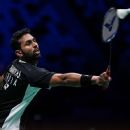
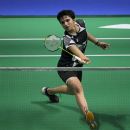
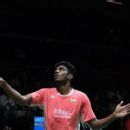
These achievements seen in isolation in a post-Olympic year may appear 'not bad', but Indian badminton has long outgrown 'not bad'. Last year, for instance, India went into the Olympics with seeded players in PV Sindhu, HS Prannoy, and Satwik-Chirag, while the unseeded Lakshya Sen finished fourth. Today, no Indian (apart from Satwik-Chirag) is ranked in the top 10 of any discipline and the only BWF title so far this year is a Super 300. For a sport purporting to be a core Olympic discipline for India, this is a huge dip. Whether we frame it as a transition period -- or more critically, a void -- it's been evident for a while now that the gap between the top tier and second rung of players in India is too wide.
The dip from the current stars is perhaps understandable. PV Sindhu is 30, but her legs carry double that mileage. HS Prannoy is battling his body as much as his opponent, Lakshya Sen has always been mercurial, while even Satwik-Chirag have had their injury troubles. The worry is, though, that there don't seem to be any (immediate) potential candidates to fill in their big shoes.
Ayush's title and juniors like Unnati and Tanvi Sharma give sparks of hope, but there are no standout prodigies. After all, Sindhu started winning World Championship medals at 18, while Saina Nehwal became the first Indian woman to win a Super Series tournament at 19.
So... if Sindhu was the next Saina, where is the next Sindhu? We've been asking this question, and variations of it, for a while now ('where's the next world-class top-tier doubles pair?'), but are there any answers?
The good thing, at least, is that the stakeholders in Indian badminton are aware of this issue and aren't afraid to acknowledge it. They do say, though, it will take at least another three to five years - which is an entire Olympics cycle and more - for Indian badminton to have consistent glory days again.
Before we get to that, just how did things get so bad, when the India's unprecedented success should have spurred badminton's growth higher? Prannoy, for one, believes that this massive success of the past decade and a half itself is one of the reasons -- it has raised expectations sky high.
"There are a couple of reasons, I think," Prannoy tells ESPN. "One is, as I've always said, badminton as sport peaked very quickly in India. In a span of five to six years there were a bunch of very talented players who were training together and suddenly there was a wave of confidence because of what Saina and Sindhu initially started off. This confidence gave a lot of players the belief that we could go out there and win too, in that wave we did really well until this Olympics."
"As we've peaked big before and people have the expectations which are nothing less than an Olympic or a World championship or a Super Series. So, when you don't achieve that then you feel there is a big issue."
"Then there is a dearth of players all of a sudden, there is a bench strength problem which is a concern. Now we are in the transitional shift where a lot of the top players are in their 30s and the youngsters are yet to take over... this next two three years looks really tight. I feel we are still not yet there to find the players who are going to be in the top 10s of the worlds."
Acknowledging it is one thing, doing something about it is another. One potential solution, according to the Badminton Association of India (BAI) and some top players, is centralising training. Hence, the setting up of National Centre of Excellence (NCE) in Guwahati, opened in 2023. A centralised coaching set-up for talented junior players, who have been scouted at age group tournaments across India, the NCE aims to consolidate what is now a scattered private-academy-backed training pattern.
"Initially we had only two centres - the Gopichand academy and the Prakash Padukone academy - our senior camps were always there throughout the year," BAI general secretary Sanjay Mishra tells ESPN. "But now we have NCE in Guwahati, that centre is for the juniors only. There we have one of the best coaches in the world in Park Taesang, Ivan Sozonov and Sankar Annamalai and the best facilities. Now the youngsters from there have started to perform well [but] it will take three to four years for the results because they are still juniors."
"Earlier we had a problem that there was no second line, but we have that now. The plus point now is that we have a plan in place for year-round coaching, which we didn't have earlier. Before we only had camps before big events, but they are training together and participating together as a team. It will take some time, but we will have big podium finishes."
Right now, though, not everyone trains at NCE. While Tanvi and Badminton Asia Team Championships star Anmol Kharb train out of Guwahati, most of the big talent is still split. Unnati, for instance, still prefers to train with her father at home in Rohtak, Haryana while the elite continue to be split between the Gopichand and Padukone centres in Hyderabad and Bengaluru respectively.
Prannoy, who trains in Hyderabad, which has been the central hub of Indian badminton for years, certainly feels so.
"If you look at the top teams out there like China, Korea, Japan, France, a lot of them are training together," he says. "They are still in that structure where they're able to train together and I as a player I have always believed that top players need to train together because you need to have that competitive environment during the training which is missing now."
"When people are training individually at different places, the sustainability of continuous results is very tough because once you're the top player in that particular centre, it's tough to improve from a certain point. If you want to be constantly up there, I think we have to be constantly on your toes in training because somebody would keep pushing every single day. That structure had slowly drifted away in the last five to six years because of certain reasons and I feel we should come back at it."
He would have himself experienced this as this separation is particularly stark in singles, where India's No 1 and 2 in men's singles - Lakshya and Ayush - train across the state border in the Padukone academy. Tanisha Crasto, who is India No 1 in mixed doubles with Dhruv Kapila, said they don't have a lot of pairs to play with them internally, which puts them at a disadvantage internationally.
"That is a big problem, yes," Mishra says with a smile, when asked about players preferring personal coaching set-ups. "We will have discussions with players and their parents about this. But initially we don't want to pressurise them to come to the national centre. Otherwise even if they have one failure, they may blame it on this."
Mishra says this is a challenge they are working on for the future generations, but not something they will impose on the current lot. "It won't be right to disturb the senior players now, Sindhu, Lakshya, Prannoy, Srikanth... they have done a lot for Indian badminton, so we won't pressurise them for anything. They can train wherever they are comfortable. That issue won't happen among juniors now."
There are, though, other changes BAI are bringing about to the badminton structure at the top. Including attempting to democratize personal coaching. The federation attempted this post the Paris Olympics - where they brought in international coaches for a discipline and not a single player.
So, Irwansyah Adi Pratama, for instance, was brought in as the women's singles coach this year, making Sindhu part of a training group instead of having him as a personal coach. Tan Kim Her was the doubles coach and not just for Satwik and Chirag. But with Sindhu training in Bangalore, India No 2 Malvika Bansod training in Maharashtra and No 3 Unnati having her base in Haryana, this is not exactly practical. Currently, he trains a group in Bangalore with a few Indians like Devika Sihyag and Isharani Baruah, where the BAI has attached a few Indian coaches to learn from him and focus on youngsters.
But isn't it personal coaching and individual training that took Indian badminton to such great heights in the first place?
The thing is, success at the top and growth from the bottom can be two different things, and this is what has caused this bench strength problem. Indian badminton does not have a problem of talent, (does any Indian sport, really?) This is more of a finishing school problem. How that vast potential is harnessed, and then sustained is where the focus needs to be.
For BAI, this means building from the junior level which they are investing in with the NCE and hosting of World Junior Championship in India, before they can host the senior event, which would have been more marketable.
"Our 100% focus is now on the second line, on the juniors," says Mishra. "Our seniors are very experienced and have performed at a very high level already so for them all we can do is to ensure that they don't get injured. If they are not injured, they will perform their best we know that."
This focus on juniors and sub-juniors is something that Indian coaching legend Gopichand agrees with. "There are a bunch of youngsters who are doing well, we have a sub-junior player who won the senior nationals [Anmol], another 15-year-old in the final [Tanvi]. I think we have some young talent coming up the ranks and I am hoping that in the next couple of years we will be able to showcase some good women's singles as well," he had told reporters last year.
There are other junior initiatives planned to develop the players at the NCE which are yet to be announced, all aimed at India first winning medals at the World Junior Championships at home and then going on to be successful seniors.
Will this building from the bottom up solve the bench strength issue in a few years, though? It's hard to predict what a brand-new system can do to an established sport, but it's certainly a start. To grow the sport will take more than human resource development at the NCE.
Badminton, like any career path, requires significant financial investment. Right now, it's a very popular sports choice and there are badminton academies sprouting up at rapid speed all over the country, many run by former players -- which is always a boost, such as seen in shooting. However, learning and playing badminton at the junior level is an expensive prospect and the returns take time. Not every young player is going to make it to the NCE, which now has a queue of 50-75 youth to join.
The answer to this is more investment. Recently, BAI has announced a Rs 9.7 crore annual plan to drive growth from grassroots level, which includes increased grants to state associations and tournament organisers, doubled prize money in national competitions, and big rewards for international medals.
A chunk of this will also be reserved for teaching former Indian players who want to become coaches, free of cost; a train the trainer program, so that they can spread this centralised coaching manual further.
Additionally, there is corporate investment in badminton as one of the core Olympic sports, which is mostly via Padukone as one of the founders of the Olympic Gold Quest (which has supported a young Saina and Sindhu from pre-Rio days). More recently, the Reliance Foundation has signed Prannoy, Dhruv-Tanisha, and have more than 10 next-gen players on their roster as well. These organisations help in in expensive, extra-curricular areas such as sports science, nutrition and mental conditioning, often allowing support staffs to accompany players internationally.
All this is to say that the building blocks of a healthy ecosystem are already available in Indian badminton. They are being expanded further by national, federation and corporate support.
Yet, the question of bench strength has persisted and will require a few years more for resolution as most stakeholders have observed. Indeed, the corrective steps will also lead to more questions.
What will be the consequence of youngsters bolstering their foundation at a centralized national academy and veterans training under the aegis of Indian badminton legends in another part of the country? Are BAI maximising the senior-to-junior teaching potential? How will the pathway between states associations, private academies and the national center grow? What about the future role of Gopichand and Padukone academies, which have been instrumental in driving Indian badminton's progress? A hard line on the debate between personal coaches and national coach can be a tricky slope, as other Indian sports federations (wrestling, for example) have seen in the past.
For Indian badminton to be a consistent force to reckon with on the world stage, a balancing act will be needed from players and stakeholders. The BAI's plan of building for the future while co-exiting with the present model is a proactive one, and the onus will be on all levels of the pyramid to shape the future of the sport within the framework being redesigned.
Newer articles
Older articles
 Chess Star Praggnanandhaa Weighs In on Carlsen's Frustration After Loss to Gukesh
Chess Star Praggnanandhaa Weighs In on Carlsen's Frustration After Loss to Gukesh
 Samsung Galaxy A35 5G and A55 5G: Official Pricing and Availability Announced
Samsung Galaxy A35 5G and A55 5G: Official Pricing and Availability Announced
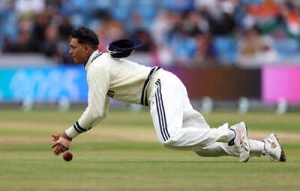 India's Fielding Woes Blamed for First Test Defeat Against England: Former Selector Voices Concerns
India's Fielding Woes Blamed for First Test Defeat Against England: Former Selector Voices Concerns
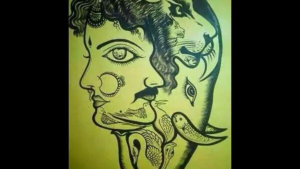 Headline: Viral Optical Illusion: Can You Find All the Hidden Animals? Only 1% Succeed
Headline: Viral Optical Illusion: Can You Find All the Hidden Animals? Only 1% Succeed
 Shadman Stands By Bangladesh Batters After Day 1 Struggles Against Sri Lanka
Shadman Stands By Bangladesh Batters After Day 1 Struggles Against Sri Lanka
 Norris Claims Thrilling Austrian GP Victory After Intense Duel with McLaren Teammate Piastri
Norris Claims Thrilling Austrian GP Victory After Intense Duel with McLaren Teammate Piastri
 Jake Paul's Title Dreams: Analyzing Championship Prospects and Potential Opponents
Jake Paul's Title Dreams: Analyzing Championship Prospects and Potential Opponents
 Gavaskar Urges India to Unleash Kuldeep Yadav in Second Test Amid Bumrah Fitness Concerns
Gavaskar Urges India to Unleash Kuldeep Yadav in Second Test Amid Bumrah Fitness Concerns
 iQoo Z9 Turbo Leaks: Snapdragon 8s Gen 3, 1.5K Display, and Massive Battery Detailed
iQoo Z9 Turbo Leaks: Snapdragon 8s Gen 3, 1.5K Display, and Massive Battery Detailed
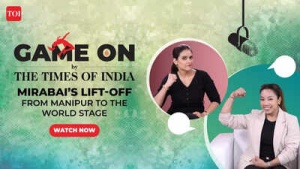 Mirabai Chanu Reveals Relentless Dedication: Training and Weight Always Top of Mind, Even During Family Time
Mirabai Chanu Reveals Relentless Dedication: Training and Weight Always Top of Mind, Even During Family Time